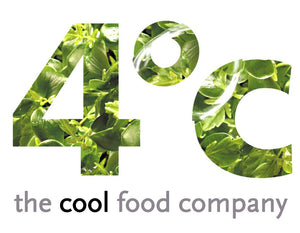{"id":7470122762416,"title":"Kohlrabi (EACH)","handle":"kohlrabi-each","description":"\u003cstrong\u003eDescription\/Taste:\u003c\/strong\u003e\u003cbr\u003eKohlrabi, often described as a cross between a radish and a turnip, is a bulbous vegetable with a crisp, juicy texture. The outer skin can range from pale green to deep purple, while its flesh is always a pale, almost translucent white. It has a mildly sweet, peppery flavour, somewhat akin to broccoli stems, but milder and sweeter.\u003cbr\u003e\u003cbr\u003e\u003cstrong\u003eSeasons\/Availability:\u003c\/strong\u003e\u003cbr\u003eKohlrabi thrives in cooler temperatures, making it an ideal crop for the UK's climate. It's generally in season from late autumn through early spring. However, with modern farming techniques, it can often be found year-round in many markets. Besides local cultivation, kohlrabi is also imported from various European countries to meet demand throughout the year.\u003cbr\u003e\u003cbr\u003e\u003cstrong\u003eUses \u0026amp; Flavour Pairings:\u003c\/strong\u003e\u003cbr\u003eKohlrabi can be eaten both raw and cooked. When raw, it's crunchy and refreshing, making it perfect for salads, slaws, or simply sprinkled with a bit of salt and lemon. When cooked, kohlrabi softens and its sweetness intensifies; it can be roasted, steamed, or added to soups and stews. The green leaves atop kohlrabi are also edible and can be used similarly to collard greens or kale. The vegetable pairs well with butter, cheese, dill, and mustard.\u003cbr\u003e\u003cbr\u003e\u003cstrong\u003eNutritional Information \u0026amp; Allergens:\u003c\/strong\u003e\u003cbr\u003eKohlrabi is a nutrient-rich vegetable, packed with dietary fibre, vitamin C, vitamin B6, and potassium. It also contains beneficial plant compounds like isothiocyanates, which have antioxidant properties. Kohlrabi is naturally gluten-free and is not commonly associated with allergens.\u003cbr\u003e\u003cbr\u003e\u003cstrong\u003ePreparation and Storage:\u003c\/strong\u003e\u003cbr\u003eTo prepare kohlrabi, start by trimming off the stems and leaves (if still attached) and then peel the bulb's tough outer layer using a knife or vegetable peeler. Once peeled, it can be sliced, diced, or julienned based on the dish's requirements. Store kohlrabi in a cool, dry place if intending to use it within a few days, or in the refrigerator's vegetable drawer for longer storage.\u003cbr\u003e\u003cbr\u003e\u003cstrong\u003eHistory:\u003c\/strong\u003e\u003cbr\u003eKohlrabi has its origins in Northern Europe and is believed to have been cultivated since the 16th century. Its name is derived from the German words \"kohl\" (cabbage) and \"rabi\" (turnip), indicative of its flavour and appearance.","published_at":"2024-02-07T18:26:46+00:00","created_at":"2024-02-07T18:26:48+00:00","vendor":"Osolocal2U","type":"Vegetable Root","tags":["Bulk Update 081020","BULKUPDATE120821","Gee Fresh Produce Review List","GENERIC"],"price":450,"price_min":450,"price_max":450,"available":true,"price_varies":false,"compare_at_price":null,"compare_at_price_min":0,"compare_at_price_max":0,"compare_at_price_varies":false,"variants":[{"id":43169086472368,"title":"Default Title","option1":"Default Title","option2":null,"option3":null,"sku":"KOHLE","requires_shipping":true,"taxable":false,"featured_image":null,"available":true,"name":"Kohlrabi (EACH)","public_title":null,"options":["Default Title"],"price":450,"weight":454,"compare_at_price":null,"inventory_management":null,"barcode":"","requires_selling_plan":false,"selling_plan_allocations":[],"quantity_rule":{"min":1,"max":null,"increment":1}}],"images":["\/\/4degreesc.com\/cdn\/shop\/products\/Kohlrabi_71c59cca-79db-4c25-bc7b-35ab7d2e7e6c.jpg?v=1707330408"],"featured_image":"\/\/4degreesc.com\/cdn\/shop\/products\/Kohlrabi_71c59cca-79db-4c25-bc7b-35ab7d2e7e6c.jpg?v=1707330408","options":["Title"],"media":[{"alt":null,"id":26013748297904,"position":1,"preview_image":{"aspect_ratio":1.415,"height":1240,"width":1754,"src":"\/\/4degreesc.com\/cdn\/shop\/products\/Kohlrabi_71c59cca-79db-4c25-bc7b-35ab7d2e7e6c.jpg?v=1707330408"},"aspect_ratio":1.415,"height":1240,"media_type":"image","src":"\/\/4degreesc.com\/cdn\/shop\/products\/Kohlrabi_71c59cca-79db-4c25-bc7b-35ab7d2e7e6c.jpg?v=1707330408","width":1754}],"requires_selling_plan":false,"selling_plan_groups":[],"content":"\u003cstrong\u003eDescription\/Taste:\u003c\/strong\u003e\u003cbr\u003eKohlrabi, often described as a cross between a radish and a turnip, is a bulbous vegetable with a crisp, juicy texture. The outer skin can range from pale green to deep purple, while its flesh is always a pale, almost translucent white. It has a mildly sweet, peppery flavour, somewhat akin to broccoli stems, but milder and sweeter.\u003cbr\u003e\u003cbr\u003e\u003cstrong\u003eSeasons\/Availability:\u003c\/strong\u003e\u003cbr\u003eKohlrabi thrives in cooler temperatures, making it an ideal crop for the UK's climate. It's generally in season from late autumn through early spring. However, with modern farming techniques, it can often be found year-round in many markets. Besides local cultivation, kohlrabi is also imported from various European countries to meet demand throughout the year.\u003cbr\u003e\u003cbr\u003e\u003cstrong\u003eUses \u0026amp; Flavour Pairings:\u003c\/strong\u003e\u003cbr\u003eKohlrabi can be eaten both raw and cooked. When raw, it's crunchy and refreshing, making it perfect for salads, slaws, or simply sprinkled with a bit of salt and lemon. When cooked, kohlrabi softens and its sweetness intensifies; it can be roasted, steamed, or added to soups and stews. The green leaves atop kohlrabi are also edible and can be used similarly to collard greens or kale. The vegetable pairs well with butter, cheese, dill, and mustard.\u003cbr\u003e\u003cbr\u003e\u003cstrong\u003eNutritional Information \u0026amp; Allergens:\u003c\/strong\u003e\u003cbr\u003eKohlrabi is a nutrient-rich vegetable, packed with dietary fibre, vitamin C, vitamin B6, and potassium. It also contains beneficial plant compounds like isothiocyanates, which have antioxidant properties. Kohlrabi is naturally gluten-free and is not commonly associated with allergens.\u003cbr\u003e\u003cbr\u003e\u003cstrong\u003ePreparation and Storage:\u003c\/strong\u003e\u003cbr\u003eTo prepare kohlrabi, start by trimming off the stems and leaves (if still attached) and then peel the bulb's tough outer layer using a knife or vegetable peeler. Once peeled, it can be sliced, diced, or julienned based on the dish's requirements. Store kohlrabi in a cool, dry place if intending to use it within a few days, or in the refrigerator's vegetable drawer for longer storage.\u003cbr\u003e\u003cbr\u003e\u003cstrong\u003eHistory:\u003c\/strong\u003e\u003cbr\u003eKohlrabi has its origins in Northern Europe and is believed to have been cultivated since the 16th century. Its name is derived from the German words \"kohl\" (cabbage) and \"rabi\" (turnip), indicative of its flavour and appearance."}

